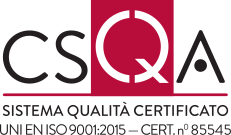
During the health emergency caused by the Coronavirus, teachers and students had to adapt to a new situation, that of distance learning; the importance of connectivity to schools as centers of content provision, as well as of content fruition as they already were, has emerged in an always more binding way. The paradigm of symmetry of the band, always supported by Lepida, was therefore supported by facts.
To date, there are 1.232 facilities connected to the Lepida Network, with a 1Gbps service provided at no cost to schools or to the municipalities and provinces owners of the walls, thanks to the Emilia-Romagna Region and Lepida. The connection of these 1.232 schools has been realized over the years with a 50% co-financing between the local authorities and Lepida; the 1.232 schools are estimated to represent over 50% of the institutions present on the regional territory. Even before the Coronavirus, the Ultra Broadband Committee (COBUL) had already begun negotiations, led by the Emilia-Romagna Region, to obtain funds to infrastructure all schools in a short and certain time, freeing them from the timing of the Ultra Broadband concessionaire and using in each Region specific models, able to enhance the different choices, infrastructure, skills, local authorities and in-house companies. The Coronavirus emergency led the COBUL to decide for this strategy on May 5th and, in the case of Emilia-Romagna, it was agreed to use the infrastructures already built by the Open Fiber Ultra Broadband Plan, where already available, and to have new infrastructures built timely by Lepida for all those schools not already connected by fibers owned by or permanently available to Lepida. Noteworthy is the fact that the schools not yet infrastructured are often the most difficult to reach, the least populated and therefore the least attractive for any market operator.
The allocation by the COBUL was of 24M€ for the schools of the Emilia-Romagna region, and this figure makes it possible to connect all schools of all levels. The schools considered are, in order of priority: high schools, professional schools, technical high schools, secondary schools, primary schools, kindergardens and nurseries where possible. The Plan provides for completion within about two years, without considering kindergardens and nurseries. The Plan therefore starts from high schools, but also considers as a priority all the projects that Lepida has already carried out for the local authorities, implementing them immediately. During the realizations, as always, attention will also be placed on setting preparations for any further use by the public, or for the overcoming of the digital divide with respect to the Ultra Wideband. The schools will be reached by a symmetrical Internet connection at 1Gbps; the service remains free of charge. We are also working frantically to better census the schools not already connected. Of fundamental importance is the role of the local authorities for the authorizations of the works, which, although already part of the signed Ultra Broadband Convention, always require great attention.



